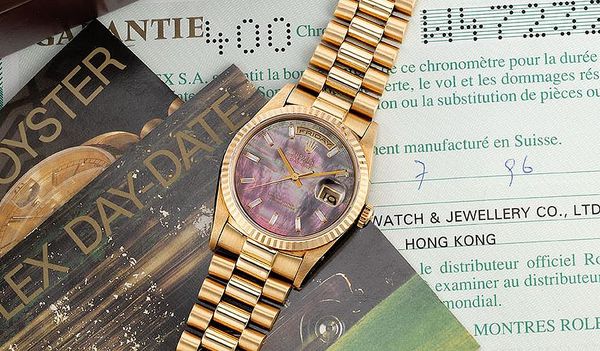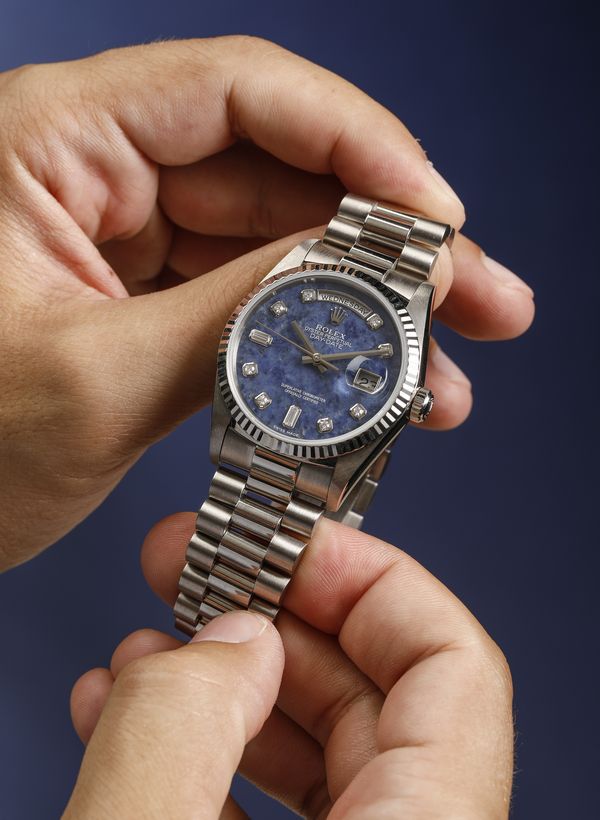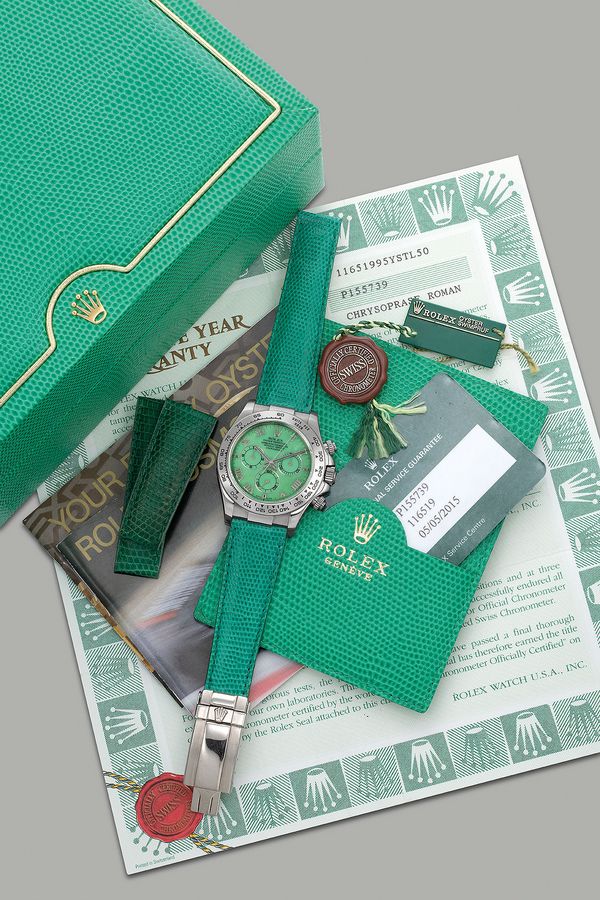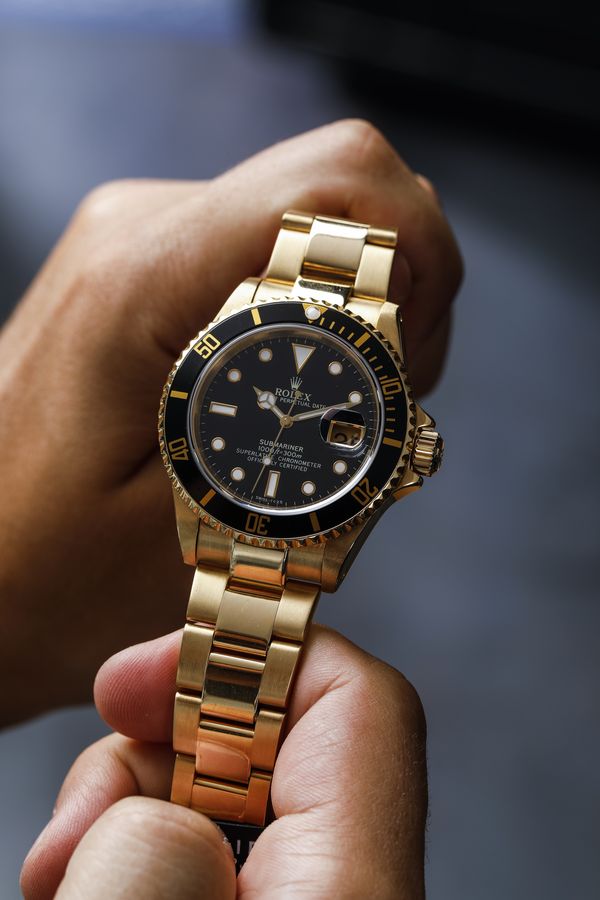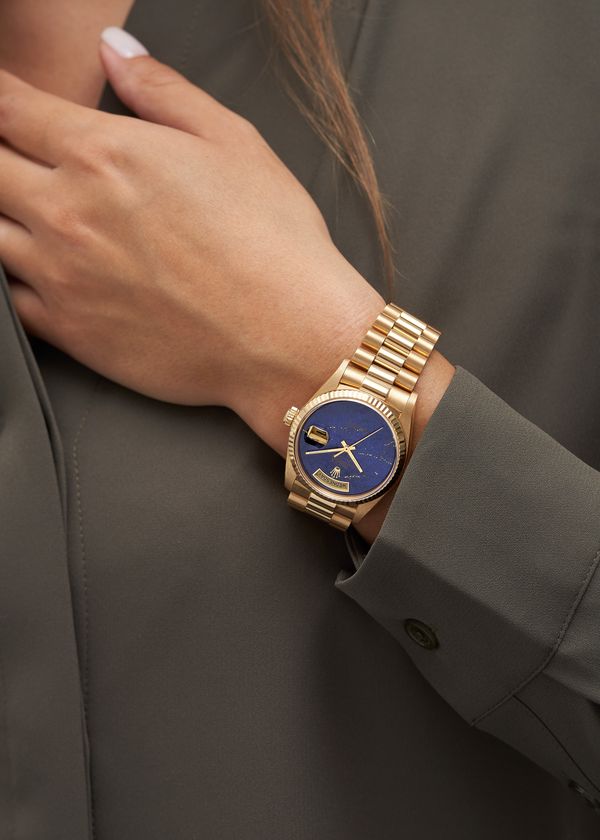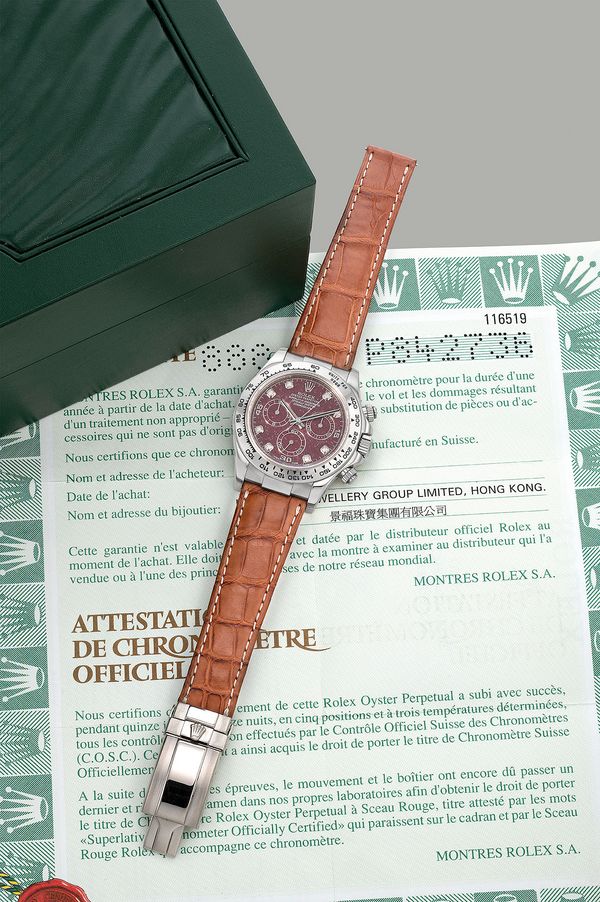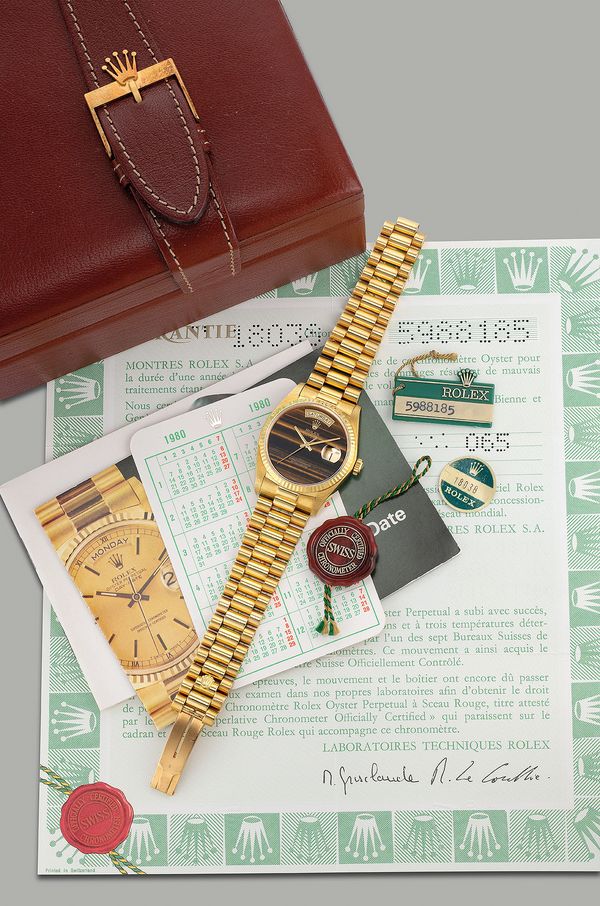By Clara Kessi
The seventies were a time of long hair, bell-bottoms, disco baby, commercial transatlantic flights, the break-up of the Beatles, The Godfather, the death of Jimmy Hendrix, the invention of the Rubik’s cube, the birth of Microsoft and Apple, Jaws, the release of the legendary song Bohemian Rhapsody by Queen, Star Wars, the birth of Aurel Bacs, Garfield, Margaret Thatcher, the Happy Meal at McDonald’s, and most relevant to this article, the introduction of hardstone dials in the Rolex catalogue.
Lot 20 of the Geneva Watch Auction XIV - Rolex Day-Date ref. 18239 with a Sodalite dial.
Rolex has always been at the innovative forefront when it comes to the experimentation of materials and technologies. Never complacent, the brand kept and keeps on building upon its previous achievements, forever testing the limits and, producing some of the most fascinating timepieces of the 20th century.
Lot 820 of the Hong Kong Watch Auction XIII - Rolex Cosmograph Daytona ref. 116519 with a green chrysoprase dial.
Working hand in hand with the celebrated dial maker Stern Frères (later renamed Stern Creation), Rolex started experimenting in 1970 with natural stones to create eye-catching and unique dials. Reflecting the colourful expression of seventies found in music, art and fashion, these pieces brought a “petit grain de folie” and a splash of creativity to the traditional Swiss watchmaking manufacture. Until today, some of the most luxurious and bedazzling Rolex timepieces adorn a natural hardstone dial.
Lot 151 of the Geneva Watch Auction XIV - Rolex Submariner ref. 16618 with an Onyx dial.
First introduced to Day-Date and Datejust models, Rolex extended the stone dials in the 1990s to Submariner reference 16618 (such example was sold in The Geneva Watch Auction: XIV, lot 151) and precious metal Daytona models, to the delight of the most discerning collectors today.
Lot 27 of the Geneva Watch Auction XIV - Rolex Day-Date ref.18038 with a Lapis Lazuli dial.
Opal, lapis-lazuli, coral, mother-of-pearl, agate, sodalite, malachite, jade, onyx, tiger’s eye, jasper, rubellite, chrysoprase and fossil, to cite a few, were all playfully displayed in the catalogue of the maison. Extremely tough to execute and requiring a rigorous process, each natural hardstone has its own distinct hardness and composition. The softer the stone is, the more fragile and difficult it is to carve and shape it. To guarantee a certain homogeneity and rigidity, the dial maker adds a 0.15 mm thick base layer of an alloy of zinc, copper and tin, also known as chrysocale, to the back of the hardstone, thus increasing the thickness of the dial to 0.65 mm (compared to 0.5 mm for a classic dial). So difficult they are to produce, it is believed that the production of these dials comes with an 80% wasting rate, rendering each piece even more rare and collectable.
Lot 1022 of the Hong Kong Watch Auction XIII - Rolex Cosmograph Daytona ref. 116519 with a Grossular Garnet Rubellite dial.
With various natural hardstones each with its own distinct colour, texture and patterns, every single example is unique. More than a just beautiful object to behold, each stone carries an intrinsic cosmic meaning that has been passed on from generation to generation through myths and legends, until today. Symbolizing either health, protection, luck, strength, freedom or purity, Rolex wonderfully combines the mythological allure of hardstones with the fine and elegant design of its models.
Lot 1017 of the Hong Kong Watch Auction XIII - Rolex Day-Date ref.18038 with a "Tiger's eye" dial.
Find plenty of hardstone Rolex watches offered to our upcoming Hong Watch Auction XIII, browse here
For more information on hardstone dials, please refer to Dr. Helmut Crott’s wonderful book Le Cadran on pages 256-261.
